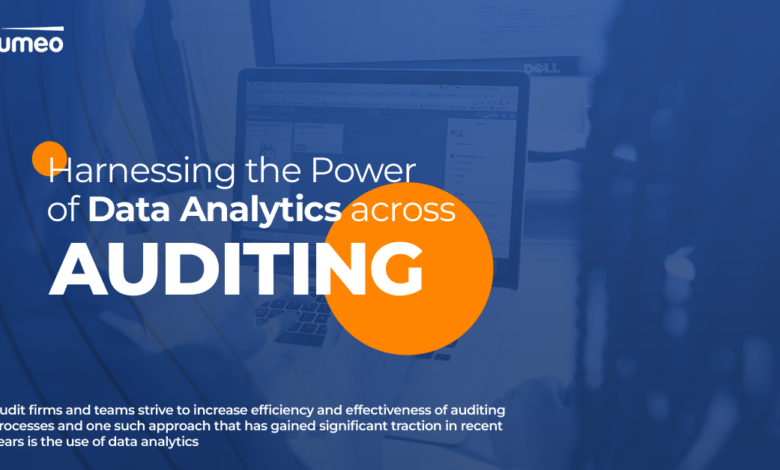How to Leverage Data Analytics in the Expense Auditing Process?

In the life sciences industry, managing expenses, particularly Travel & Entertainment (T&E) costs, is a critical area of focus for compliance officers. Expense report audits are essential for ensuring financial integrity, regulatory compliance, and preventing fraud. With large volumes of data generated through business operations, the traditional approach of manually auditing expense reports is no longer sufficient. To streamline the auditing process and enhance accuracy, many companies are now turning to data analytics.
Data analytics provides powerful tools for examining T&E expenses, identifying trends, and flagging irregularities. By leveraging advanced analytics, life sciences companies can enhance their expense report audit checklist, improve compliance outcomes, and reduce the risk of fraudulent activities.
In this blog, we will explore how data analytics can be leveraged to optimize expense report audits and enhance T&E monitoring.
Challenges of Conventional Expense Report Audit Practices
Expense report audits play a vital role in ensuring that employee expenses comply with company policies and regulatory standards. However, the traditional manual approach to auditing presents several challenges, including:
- Limited sample size: Manual audits often rely on sampling, which means that only a small percentage of expenses are reviewed. This can lead to missed discrepancies or patterns of fraud.
- Time-intensive: Reviewing each report individually is labor-intensive and can result in delayed detection of fraudulent or non-compliant activities.
- Human error: With the manual process, there’s always the risk of overlooking errors or failing to detect non-compliance, especially when dealing with high volumes of data.
To address these challenges, organizations are increasingly turning to data analytics to automate and enhance the expense report auditing process.
Benefits of Using Data Analytics in Expense Report Auditing
1. Automating Expense Report Audits
Utilizing advanced OCR technology and computer vision can help digitalize expense reports and automate key aspects of the audit process. This reduces the time and effort required to review expenses. With the right analytics tools, life sciences companies can review 100% of expense reports rather than relying on samples. Automation helps identify anomalies such as out-of-policy spending, duplicate entries, or missing receipts without manual intervention.
For example, algorithms can be programmed to flag any T&E expenses that exceed predetermined thresholds, such as a specific travel budget or meal limit. These outliers are then flagged for further investigation, streamlining the audit process and ensuring more thorough reviews.
2. Enhancing Compliance Monitoring
In the life sciences industry, compliance with laws such as the U.S. Foreign Corrupt Practices Act (FCPA) and Anti-Kickback Statute (AKS) is critical. Data analytics tools can be integrated with compliance systems to monitor T&E expenses in real time and ensure compliance with regulatory standards.
For instance, if an employee’s expense report includes excessive or suspicious payments to healthcare professionals (HCPs), it can trigger an alert within the system. This ensures compliance officers can quickly investigate the issue and take corrective action, preventing potential violations and penalties.
3. Identifying Patterns of Fraudulent Behavior
One of the most powerful benefits of data analytics is its ability to identify patterns and trends in large datasets. By analyzing historical expense data, analytics platforms can detect red flags that indicate fraudulent behavior, such as:
- Repeated submission of expenses that fall just below the company’s policy limits
- Consistent use of similar descriptions for diverse expenses
- Unusual patterns in travel routes or accommodation preferences
For example, a sales representative submitting multiple T&E claims for “client meetings” that took place at luxury hotels may not raise concerns during a manual review. However, a data analytics platform can flag this as unusual, prompting the audit team to investigate further.
4. T&E Monitoring in Real Time
Data analytics tools enable real-time T&E monitoring, offering compliance teams visibility into ongoing expense activities. This real-time monitoring allows companies to catch compliance issues or irregularities as they occur, rather than discovering them weeks or months later during an audit.
Additionally, these platforms provide dashboards that give compliance teams an overview of spending trends, helping identify potential issues before they become full-blown problems. By keeping a pulse on real-time T&E expenses, organizations can take a proactive approach to risk management.
5. Data Visualization and Reporting
Data analytics platforms provide comprehensive reporting and data visualization tools, allowing auditors and compliance teams to gain deeper insights into expense patterns. Graphs, charts, and visual summaries can help identify areas where expenses are rising disproportionately or where policy violations frequently occur.
These tools also make it easier for compliance officers to present findings to management in a clear and digestible format. Insights from the data can drive policy changes or highlight the need for additional training to prevent future issues.
Practical Applications of Data Analytics in Expense Report Auditing
a. Risk-Based Scoring Systems
A risk-based approach to auditing allows life sciences companies to prioritize high-risk expenses for review. By assigning risk scores based on criteria such as expense category, vendor, or region, auditors can focus their efforts on expenses that are more likely to be non-compliant.
For instance, if T&E expenses related to client entertainment in certain regions are historically high, a risk-based scoring system can flag those reports for more thorough review.
b. Predictive Analytics for Future Spending Trends
Predictive analytics can help life sciences companies forecast future T&E expenses based on historical data. This allows organizations to set more accurate budgets and monitor for potential overspending in real-time. Predictive models can also highlight areas where costs may be rising due to changing market conditions or shifts in employee behavior.
c. Machine Learning and AI-Driven Audits
Machine learning algorithms can analyze past expense data to develop predictive models for future audits. These algorithms can continuously learn from data patterns, improving their ability to detect unusual behaviors and anomalies. Over time, machine learning systems can become more adept at identifying new types of fraud or non-compliance, further enhancing the audit process.
How Life Sciences Companies Can Implement Data Analytics for Expense Audits
Implementing data analytics in the expense report audit process requires a thoughtful approach. Below are key steps life sciences companies can take to successfully leverage data analytics for enhanced T&E monitoring:
- Invest in the Right Tools: Implement a robust expense monitoring and auditing solution like the one qordata offers that integrates with your existing T&E management system (SAP Concur). These platforms should offer real-time monitoring, customizable reporting, and machine learning features.
- Train Compliance Teams: Ensure compliance officers and auditors are trained to use data analytics tools effectively. They should be able to interpret data insights, investigate flagged reports, and take corrective actions.
- Set Clear Policies: Data analytics can only be as effective as the policies that govern expense reporting. Ensure that company policies around T&E expenses are clear, and that employees are trained on compliance standards.
- Review and Refine: Continuous improvement is key. Regularly review the performance of data analytics tools, assess any gaps in detection, and refine your auditing processes to maximize efficiency.
Conclusion
Data analytics is revolutionizing the way life sciences companies approach expense report audits and T&E monitoring. By leveraging automation, real-time monitoring, and machine learning, organizations can improve the accuracy of their audits, reduce the risk of fraud, and ensure compliance with regulatory standards. Investing in the right compliance tools and strategies is essential for staying ahead in a rapidly evolving compliance landscape.
As companies embrace data-driven solutions, they not only enhance the efficiency of their expense report audit processes but also strengthen their overall compliance frameworks.


